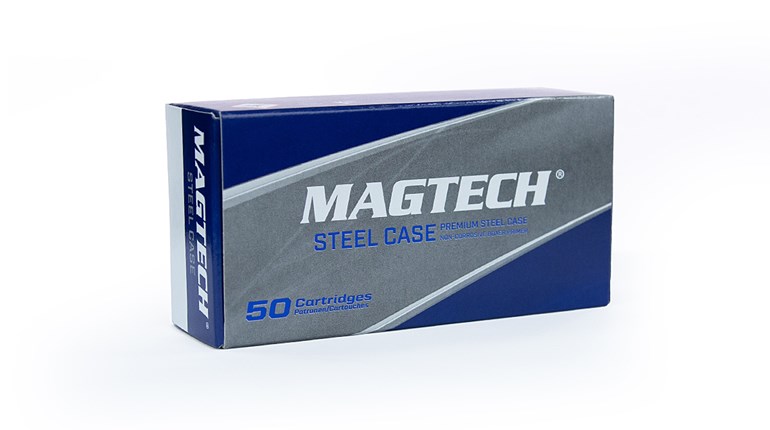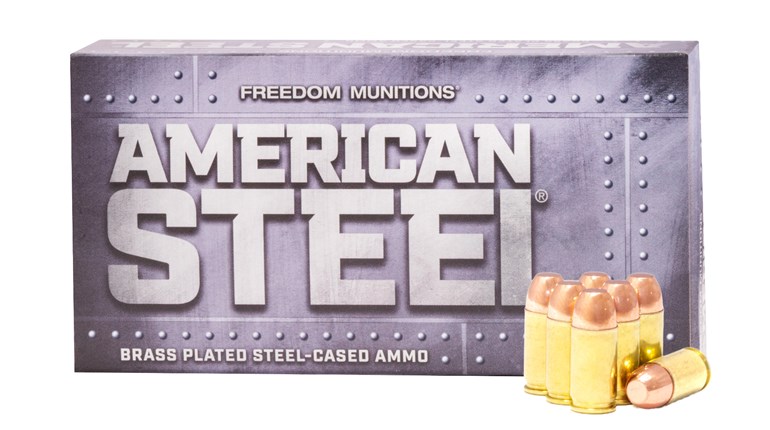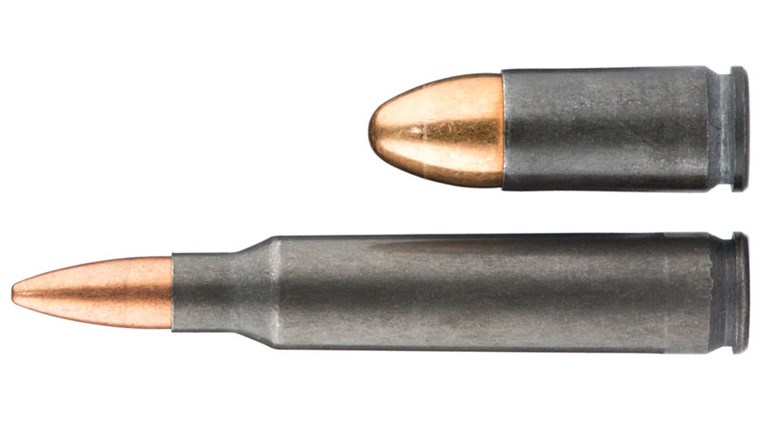
What are the pros and cons for steel shell cases, more specifically, Winchester’s USA-Forged 9 mm, 115-grain (Item WIN9S), 150-round pack?
Darrell Moriarty, Lago Vista, TX
Steel cartridge case use in handguns (as well as long guns) has been the source of controversy since their inception. One of the biggest misconceptions is since steel is harder than brass or aluminum, it must be harder on the gun as it travels through the cycle of operation. Those of that opinion are quick to reference extractor breakage or failure, especially in the AR-15/M16 platforms.
In reality, it’s not the steel cartridge case that’s the problem. The causes often stem from the buildup of corrosion in the chamber and rust-prevention materials used to coat steel cases in order to preserve the ammunition’s integrity in harsh conditions. Foreign manufacturers often use powders that are dirty and contribute to the chamber fouling.
Steel cases have different expansion and contraction characteristics from brass or aluminum. In semi-automatic firearms, this affects the timing of the cycle of operation, particularly in the extraction phase. Steel tends to keep the chamber sealed slightly longer, causing the case to stick in the chamber as the action is unlocking and attempting to extract the fired cartridge case.
The design of the cartridge has perhaps the greatest effect on how extraction takes place with steel cases. A tapered case fares much better during extraction, since once the seal is broken and the case moves even the slightest amount to the rear, friction between the case and the chamber is appreciably attenuated. This is apparent in higher-pressure cartridges.
An example would be in comparing 7.62x39 mm and 5.56 NATO. The former is utterly reliable in most platforms in which it is chambered. This is partly due to the design of the tapered case, which enhances extraction regardless of case-material composition.
Although the 5.56 NATO cartridge is slightly tapered, it is not nearly as forgiving as the 7.62x39 mm in a dirty chamber during extraction. Stand a cartridge of each design beside each other vertically and compare the sidewalls. Envision the contact surfaces with the chamber as the cartridge case is being extracted. With a little fouling, it is easy to see how the more-tapered 7.62x39 mm would be easier to extract than the 5.56 NATO.
The same considerations can be utilized with pistol ammunition, especially when used in semi- and full-auto firearms. One difference between steel-cased rifle and pistol ammo is the working chamber pressure. For example, a steel-cased .45 ACP is essentially a straight-walled case, but the working pressures are around 20,000 psi which make extraction easier. On the other hand, the 9 mm, especially in military loads, is twice the pressure of the .45 ACP. Yet, the tapered 9 mm case enhances extraction once the chamber seal is broken.
The general rule for steel-cased ammo is high-pressure loads in straight-walled cases tend to have more extraction problems than high-pressure loads in tapered cases or lower-pressure loads in straight-walled cases.
The benefits in favor of steel-cased ammo are mostly economic, making it cheaper to shoot than conventional brass offerings. Another often overlooked advantage is the spent cartridge cases can be policed up with a magnet. If you are a reloader, don’t bother with the steel cases. It’s more trouble than it’s worth—although it is possible, especially with boxer-primed cases.
In answer to your question specific to the Winchester USA-Forged WIN9S ammunition, I decided to do an informal test against the Winchester’s Q4172, a similar 115-grain brass-cased load.
By comparison one was as accurate as the other in group size. The steel load printed a few inches higher than the brass load, most likely because it chronographed 60 fps faster. Felt recoil was greater with the steel load but not by much—again that stems from the difference in velocity.
Winchester’s USA-Forged steel-cased ammo performed as well or better than comparable brass-cased ammo in my guns. Unless you plan to reload the spent cases, I’d say the steel is fine for general purposes, leaving price as the only consideration.



































